
Hummingbirds are more than just the smallest birds in the world. They play a crucial role in the environment as pollinators. Aside from being nature‘s little helpers, how much do we know about them? Find out more about these tiny creatures with these hummingbird facts.
- Hummingbirds are the world’s smallest migrating birds.
- The average lifespan of a hummingbird is 2-5 years.
- There are more than 340 species of hummingbirds.
- The birds are named for the sound made by their beating wings.
- Most hummingbird species are found in South America.
- In contrast to some migrating animals, hummingbirds can migrate alone or without a companion.
- A single hummingbird can travel or migrate solely up to over 800 kilometers, non-stop.
- The Ruby-throated hummingbirds fly over the Gulf of Mexico rather than following the longer shoreline route every year.
- The hummingbirds are the only birds that can fly backward.
- Hummingbirds do not have a sense of smell. However, they have good color vision.
- The average hummingbird weighs less than 5 grams.
- The hummingbirds do not walk. Instead, it uses its legs for perching and lateral movements.
- Hummingbird’s diet is composed of bugs, mosquitoes, spiders, gnats, small bees, and fruit flies.
- The birds can consume nectars up to double their body weight in a day.
- Female hummingbirds can only lay up to two eggs, which they incubate for fifteen to eighteen days.
- Hummingbird eggs are the size of jellybeans.
- Their nests are smaller than a dollar bill.
- Hummingbirds can fly as fast as 79 kilometers per hour.
- Hummingbirds are only found in the Americas.
- Snakes, bats, crows, raven, and toucans eat hummingbirds.
Hummingbird Facts Infographics
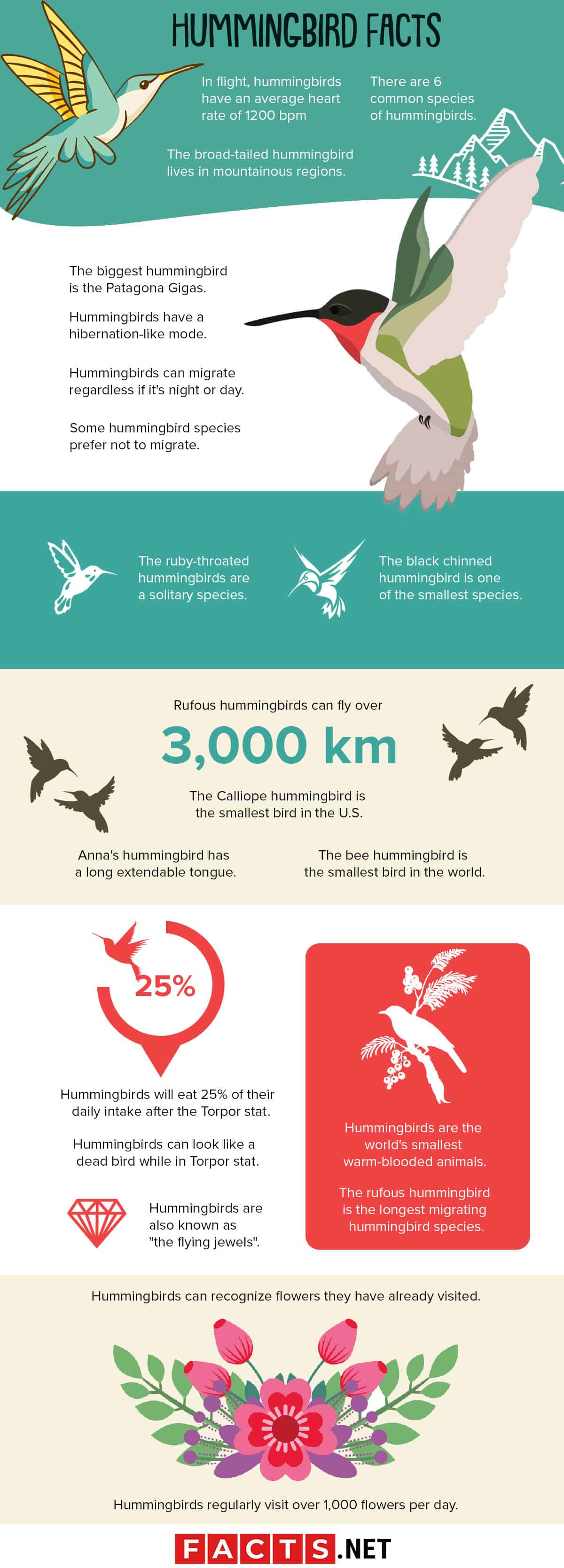
In flight, hummingbirds have an average heart rate of 1200 bpm.
Aside from their size, one of the hummingbird’s most distinct traits is its crazy heartbeat. The birds’ tiny hearts pump up to 1200 beats per minute when they’re flying around. However, their resting heart rate settles into 250 beats per minute – but it’s still much higher than the human average of only 80-100 bpm.
There are 6 common species of hummingbirds.
Out of over 300 species of hummingbirds, the most common species of hummingbirds are the Broad-tailed, Ruby-throated, Black-chinned, Rufous, Calliope, and Anna’s hummingbird. Although hummingbirds are native to the Americas, only 8 species can be found in North America.
The broad-tailed hummingbird lives in mountainous regions.
The broad-tailed hummingbird lives in the highland regions that span western Canada and the U.S. to Guatemala and Mexico. The broad-tailed hummingbird is a medium-sized hummingbird distinct for its males’ rose-magenta colored throats.
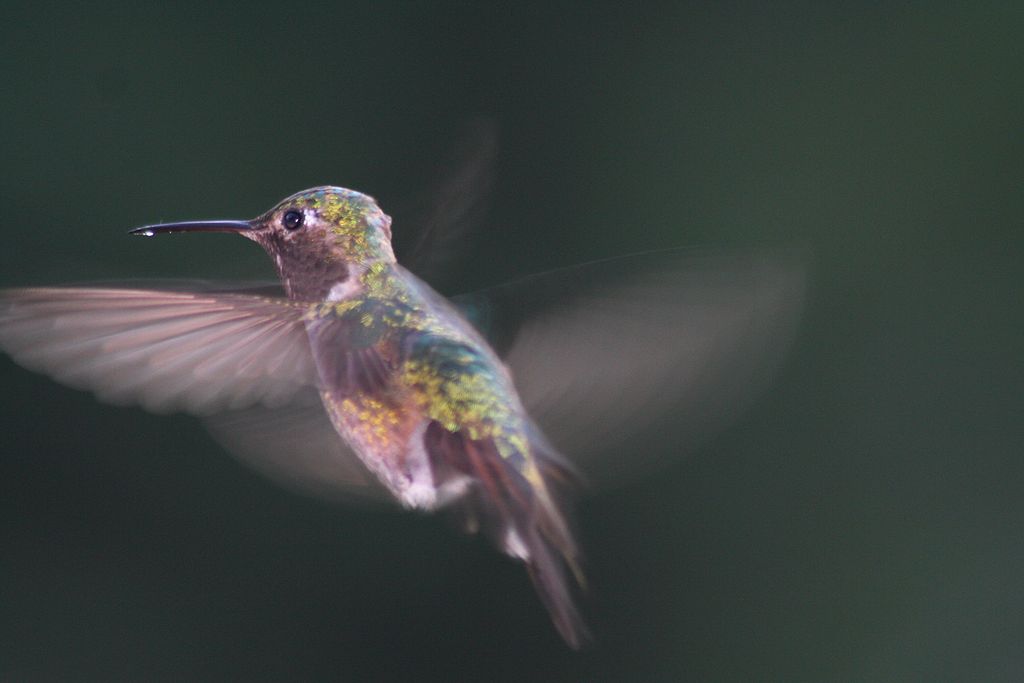
The ruby-throated hummingbirds are a solitary species.
During the summer, the ruby-throated hummingbird migrates to Northeast America then travelling to Central America, Mexico, and Florida in the winter season. The ruby-throated grows 2.8″-3.5″ long with a 3.1″-4.3″ wingspan. These birds are known as solitary hummingbirds with minimal social skills.
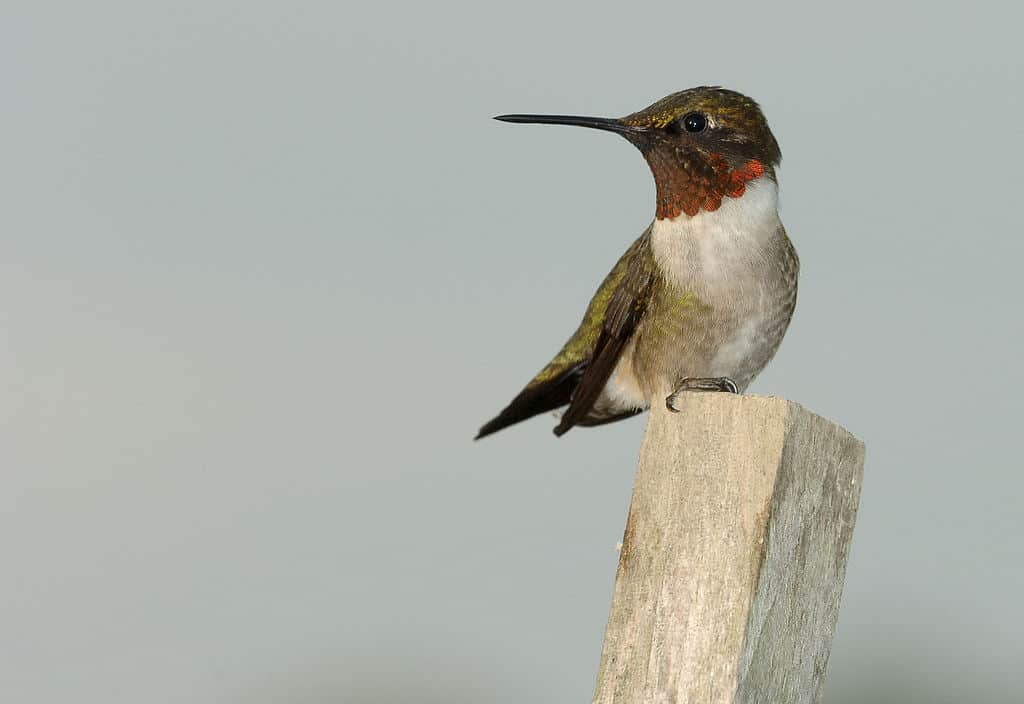
The black chinned hummingbird is one of the smallest species.
Generally speaking, hummingbirds are already pretty tiny. However, black-chinned hummingbirds are one of the smallest species there is. These little birds are distinct for their black, green, and purple colors. Black-chinned hummingbirds frequently perch on bare branches as they migrate along the western coast in the United States to Mexico.
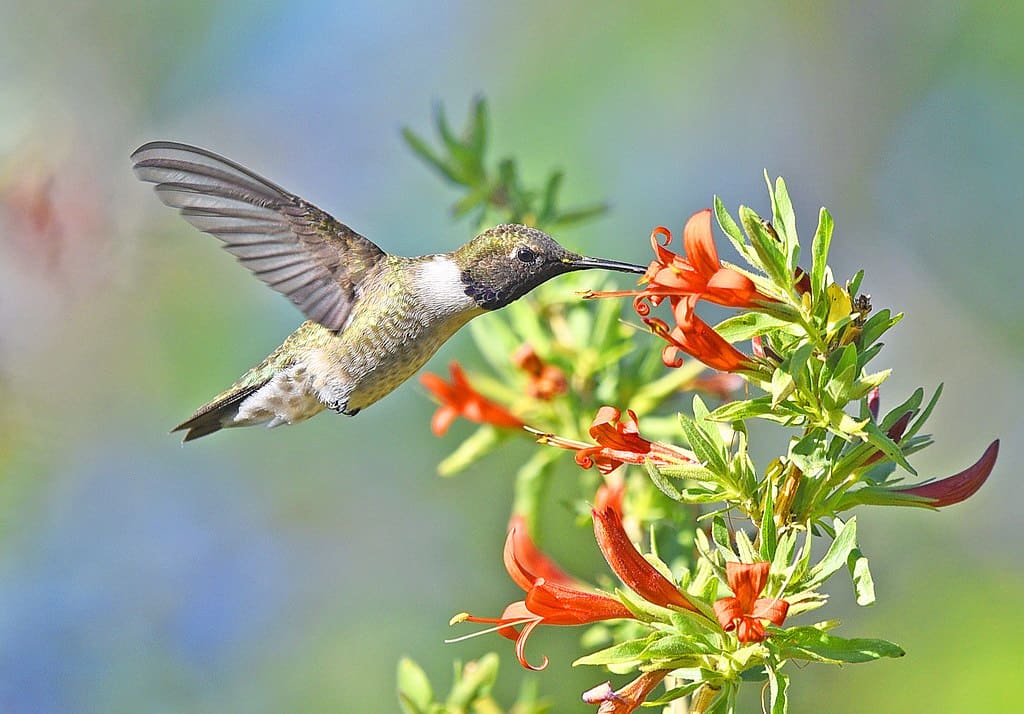
Rufous hummingbirds can fly over 3,000 km.
Rufous hummingbirds may be small, but their flying skills are larger than life. These birds can fly over 3,200 kilometers during their migratory transits. Rufous hummingbirds mostly stay in the western half of the United States, from Alaska to the south to Mexico depending on the season and migration period.
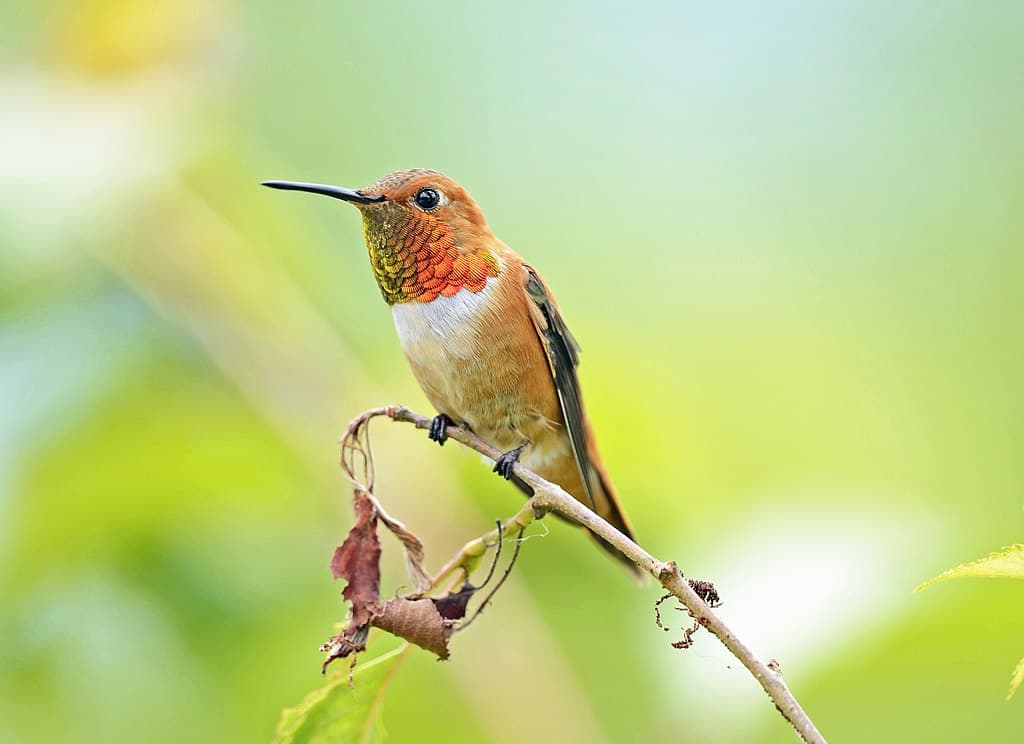
The Calliope hummingbird is the smallest bird in the U.S.
Aside from its bright magenta feathers, the Calliope hummingbird is known as the smallest bird in the United States. These birds are also widespread in Canada and Mexico.
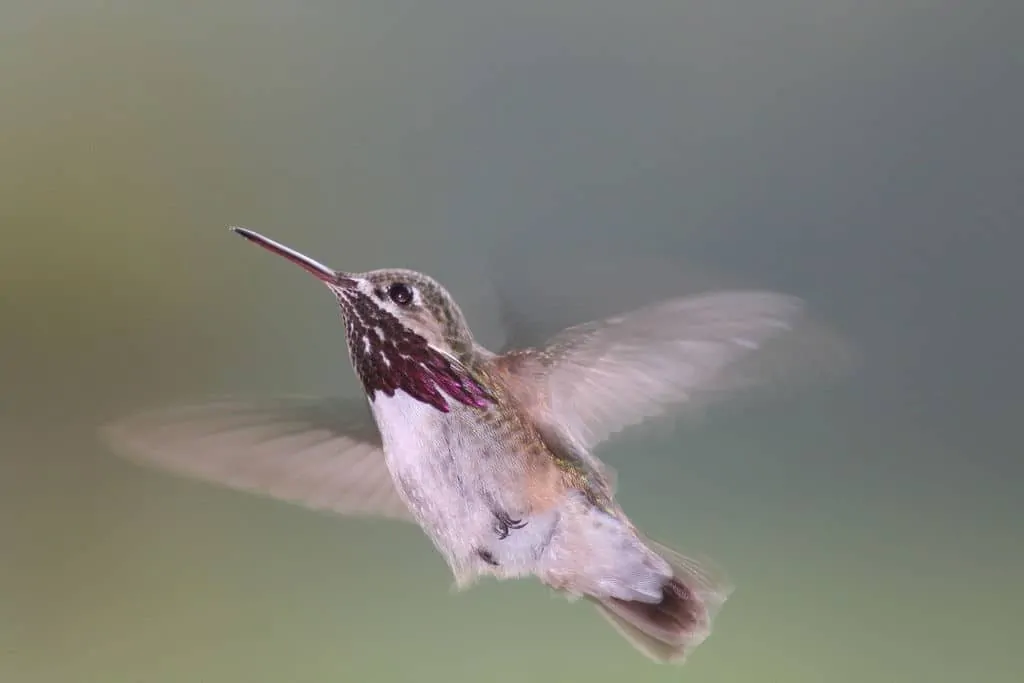
Anna's hummingbird has a long extendable tongue.
Anna’s hummingbird is known as the “medium-sized hummingbird.” Anna’s hummingbird takes nectar from flowers using its long extendable tongue. Anna’s hummingbirds are omnivorous, consuming insects and arthropods as part of its diet.
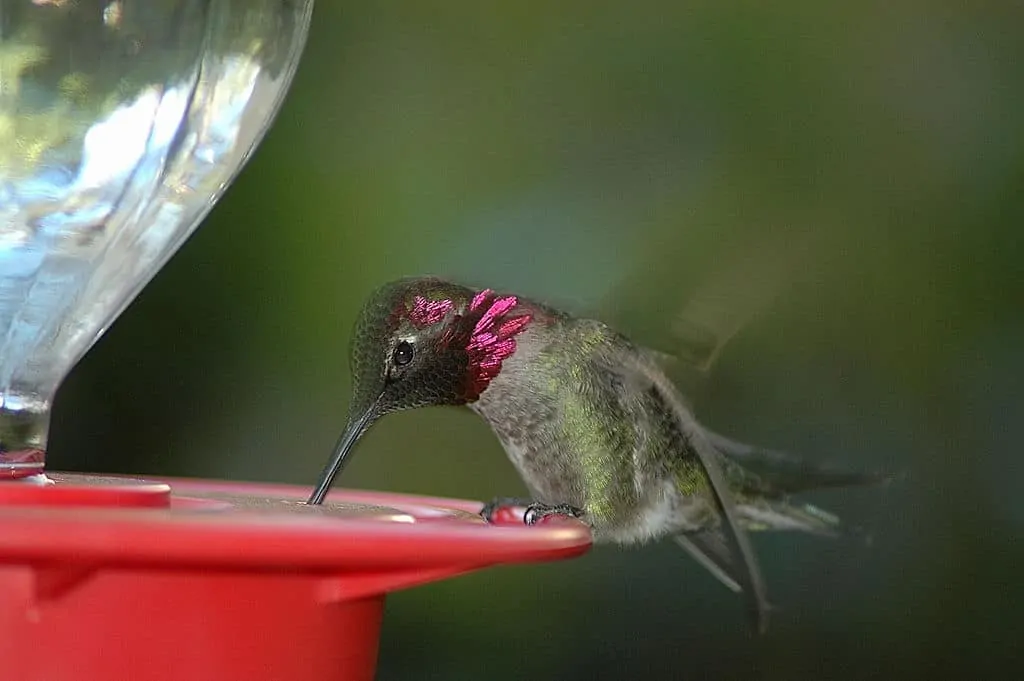
The bee hummingbird is the smallest bird in the world.
The bee hummingbird is not just the smallest hummingbird in its class, but it is also the smallest one in the world. The female bee hummingbird is much larger than the male with an average weight of 2.6 grams. In contrast, the male bee hummingbird only weighs around 1.95 grams. The bee hummingbird is named after the insect for its swift and robust flight, much like the actual bee.

The biggest hummingbird is the Patagona Gigas.
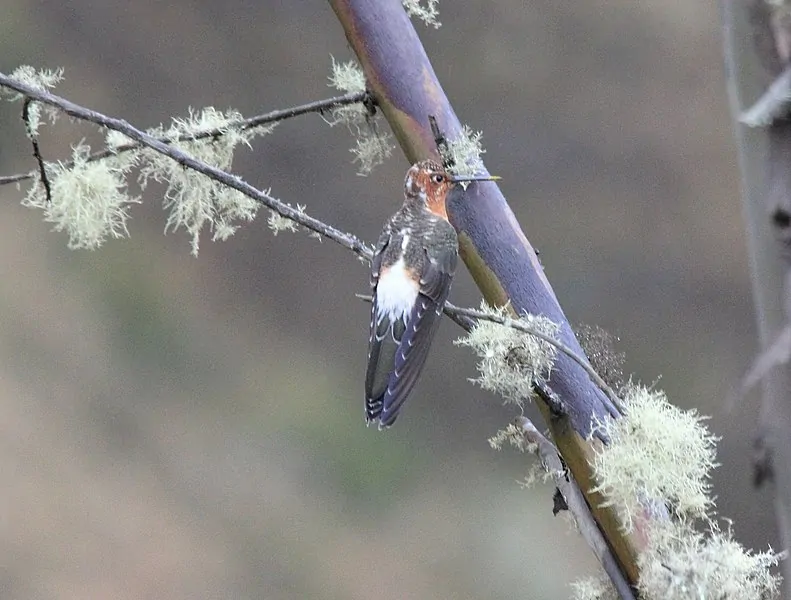
Also known as the giant hummingbird, the Patagona Gigas towers over its species. It can weigh up to 24 grams and reach a wingspan of 8″. However, this comes at a price: the Patagona Gigas’ average flight speed is 15 wing beats per second, which is slow for a hummingbird. It has a similar diet to other birds in its family.
Hummingbirds can migrate regardless if it's night or day.
Generally, hummingbirds eat plenty in the morning. However, in places with artificial light such as porch lights, hummingbirds may eat hunt and eat during night time, especially during warmer seasons. When it comes to migration, hummingbirds can fly regardless of time.
Hummingbirds have a hibernation-like mode.
As soon as the hummingbirds fall asleep, they go into a hibernation-like mode called torpor. This state allows the birds to have a deep sleep, which enables them to slow down their metabolism to one-fifteenth of its normal state. Their heart rate can drop around 50 beats per minute, slowing down their breathing. As a result, they can save up to 60% of their energy in this state.
Some hummingbird species prefer not to migrate.
For unknown reasons, some hummingbirds would stay in their place and prefer not to migrate during the winter season. One theory suggests that due to its ability to hibernate, several hummingbirds can survive even without migration. For instance, some of Anna’s Hummingbird species do not migrate anymore, staying on the northwestern coast of the United States and some other parts of Canada all year long.
Hummingbirds can look like a dead bird while in Torpor state.
When hummingbirds go into a state of torpor, they hang themselves upside-down. To an observer, a sleeping hummingbird can look like dead bird – even if someone touches them, it’s unlikely for them to wake up. On average, it takes around 20 minutes to 1 hour for a hummingbird to awaken from the Torpor state.
Hummingbirds will eat 25% of their daily intake after the Torpor state.
As soon as hummingbirds wake up from their torpor state, the first thing they will do is to look for food. They will consume over 25% of their daily consumption intake to restore energy and stack up nutrients.
Hummingbirds are the world's smallest warm-blooded animals.
Aside from the fact that the hummingbirds are the world’s smallest warm-blooded animals, they lack the insulating feathers commonly found in birds. Hummingbirds have a unique way of conserving enough energy to endure cold nights by reducing their internal thermostat at night.
The rufous hummingbird is the longest migrating hummingbird species.
The rufous hummingbird is the longest migrating hummingbird species. These hummingbirds can fly close to 5,000 kilometers from their nesting grounds in Canada and Alaska to their “winter home” in Mexico.
Hummingbirds are also known as "the flying jewels".
Most bird species have around 1,500-25,000 feathers. However, hummingbirds have less than 1,000 feathers. They are known as “the flying jewels” because they can change their feather colors in flight.
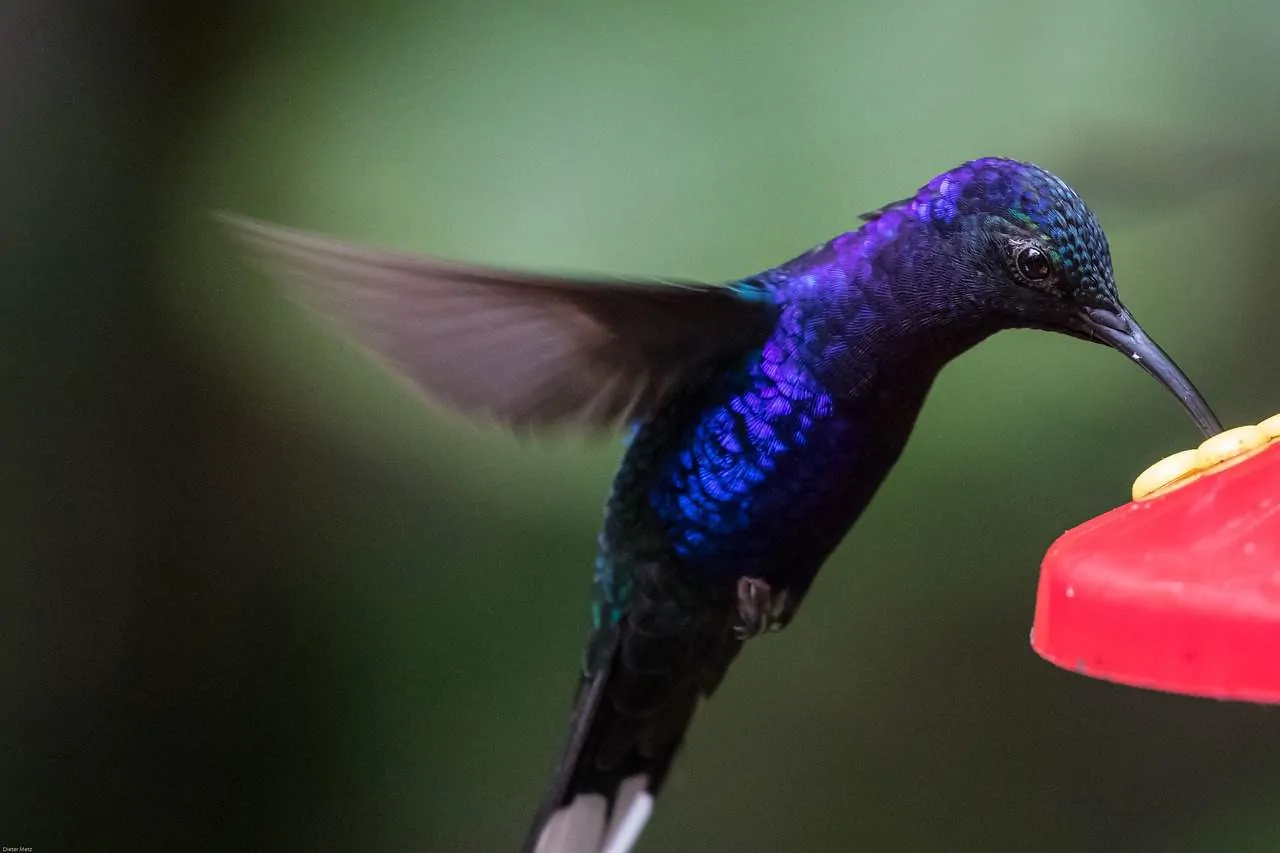
Hummingbirds can recognize flowers they have already visited.
Hummingbirds are one of the most intelligent birds. Compared to their body mass, they have a large brain, weighing around 4.2% of the hummingbird total body weight. Because of this, hummingbirds can tell apart fresh flowers from the ones they have already visited. They can also determine when a flower will refill its nectar.
Hummingbirds regularly visit over 1,000 flowers per day.
Hummingbirds consume nectar for the carbohydrates in its sugar which is their primary source of energy. Since flower nectar is the best source of sugar, the birds consume five to eight doses of it per hour. In one day, a hummingbird visits more than 1,000 flowers to complete their daily nectar fix.
Was this page helpful?
Our commitment to delivering trustworthy and engaging content is at the heart of what we do. Each fact on our site is contributed by real users like you, bringing a wealth of diverse insights and information. To ensure the highest standards of accuracy and reliability, our dedicated editors meticulously review each submission. This process guarantees that the facts we share are not only fascinating but also credible. Trust in our commitment to quality and authenticity as you explore and learn with us.
